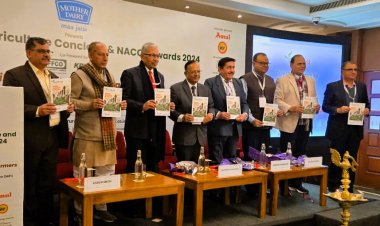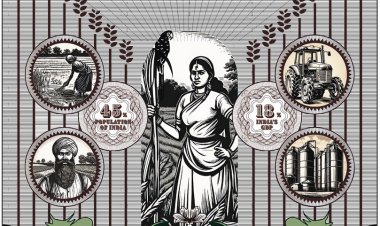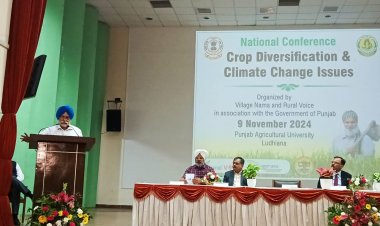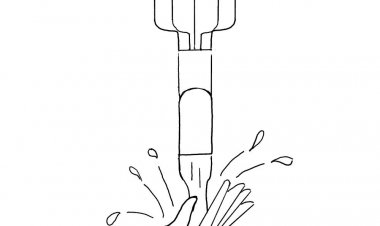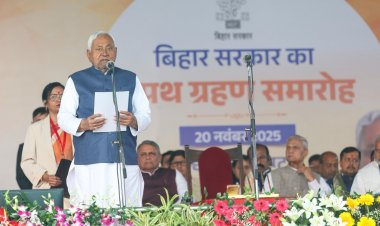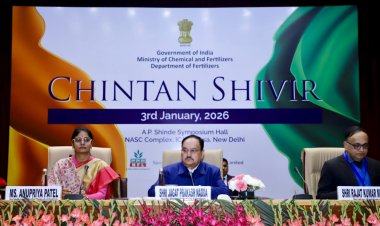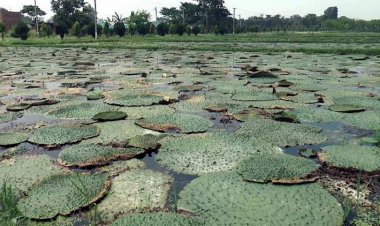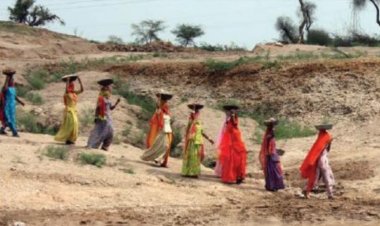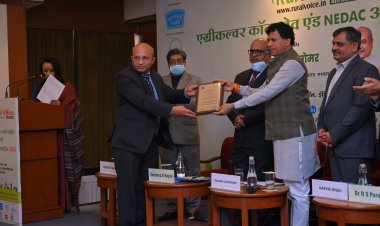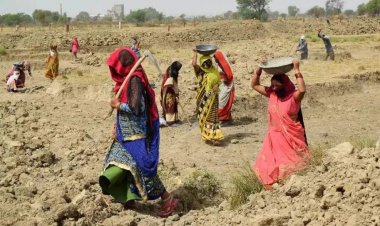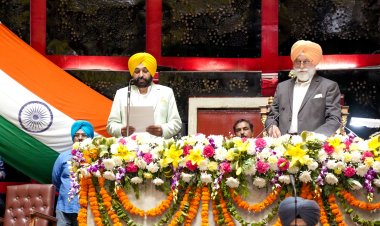We started world’s first feed e-commerce portal: Amit Saraogi
Amit Saraogi, MD, Anmol Feeds, believes that feed-based fishery is the most profitable venture in the agriculture sector today. The return on investment (RoI) in fishery is 60 per cent in six months. His company started the world’s first feed e-commerce portal in January.
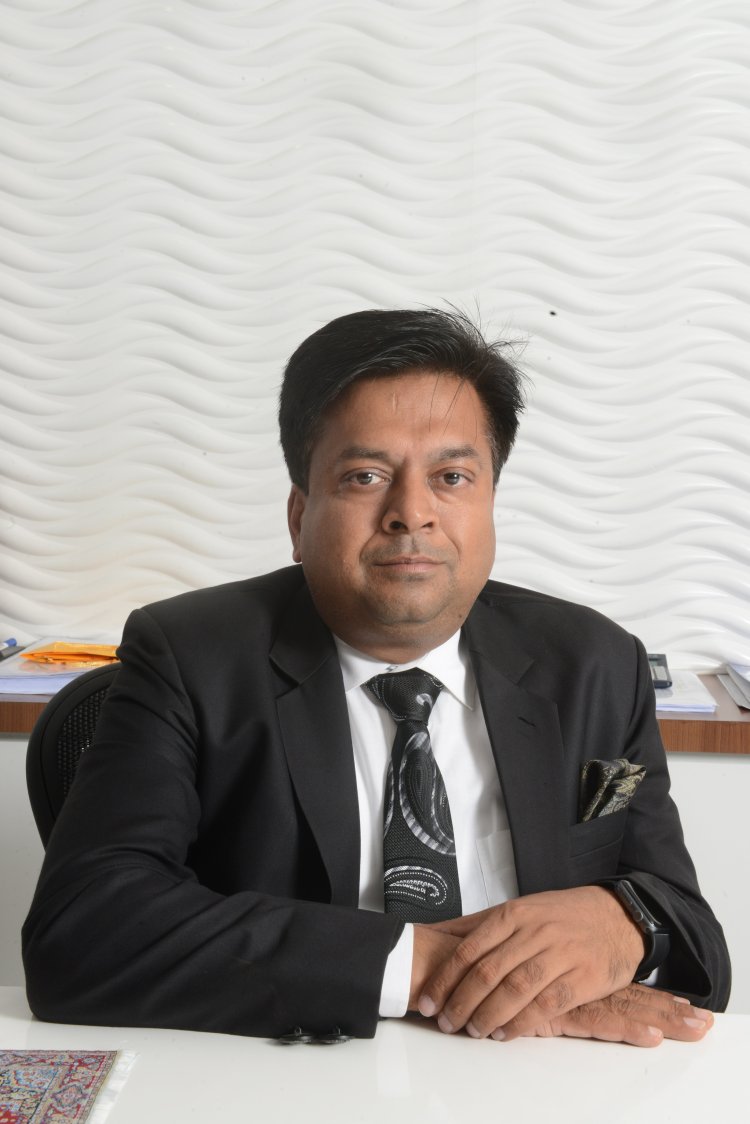
Amit Saraogi, MD, Anmol Feeds, a leading company in the animal feed sector, believes that feed-based fishery is the most profitable venture in the agriculture sector today. The return on investment (RoI) in fishery is 60 per cent in six months. Saraogi believes that state governments should promote it among the farmers through subsidies or other means. He said that his company had started the world’s first feed e-commerce portal in January. It also provides the farmers technical services along with materials. In an interview with Harvir Singh, Editor-in-Chief of Rural Voice, Saraogi spoke about the challenges and prospects of the feed industry. Excerpts from the interview:
You are the market leader in the animal feed segment. What is your turnover at present? Which feeds do you make?
Our turnover was Rs 600 crore in the financial year 2021-22. We primarily make broiler feed, which is also called chicken feed. Besides, we make floating fish feed, shrimp feed, layer feed and cattle feed. As pig farming has become popular of late, we have started making pig feed. Shrimp feed is not consumed in the domestic market; it is exported.
What is the share of the various feeds in your total production?
65 per cent of our total business consists of broiler feed. The rest consists of the other feeds. We started making animal feed at Muzaffarpur in Bihar in the year 2000. We made only broiler feed till 2006. We would sell it in about a dozen states. In 2006, we launched cattle feed. Then, in 2017, we installed a floating fish feed plant in Kolkata. There are eight feed-manufacturing plants in Bihar, Uttar Pradesh, West Bengal, Jammu and Kashmir, Jharkhand and Haryana at present. The total production capacity of all plants is 1,300 tonnes per day, which is supplied to 20 states.
Do you manufacture concentrates or ready-to-use animal feed?
Our fish feed or poultry feed is ready to use. In cattle feed, green fodder, straw, etc. have to be added.
What are the growth prospects in this sector?
There is a lot of growth prospect in fish feed, but actual growth is not taking place. For four years, the market of Bihar has been 20 thousand tonnes, Uttar Pradesh 30 to 35 thousand tonnes, West Bengal 70 to 80 thousand tonnes. It is not growing. Fishery needs money and farmers don’t have money.
What is your future growth strategy?
We have started the world’s first feed e-commerce portal. About 100 transactions are taking place every month at present. We provide the farmers technical services along with materials. We supply up to a distance of 100km from the plant or company depot. This turns out to be cheap for the farmers, too.
What is the profit in this business?
I think feed-based fishery is the most profitable business today. The return on investment is 60 per cent in six months. State governments should promote it among the farmers through subsidies or other means.
But the Pradhan Mantri Matsya Sampada Yojana does give a subsidy of up to 60 per cent.
The scheme is very small when compared to the large size of this sector. Even the subsidy that is given is for purposes like developing ponds and markets. There is a provision of only six crore rupees for feed plants while installing a floating fish feed plant today costs at least thirty crore rupees.
What challenges is the industry facing?
An increase in contract broiler farming has created problems for independent feed manufacturers. The second problem is that of raw materials, which the entire industry is struggling with. The prices of two major commodities — maize and soyabean — are very high. Soyabean is available in the domestic market as it is not being exported. Only half of the last crop had come to the market until a month ago. The new crop will be available in October. Still, the prices are very high at present. Similarly, the new maize crop has been there for a month. This is for the first time that prices have not gone down even after the new crop has arrived. It costs Rs 24 per kg by the time it reaches the factory. The price was the same in March, too. This is worrying for us.
How much of a difference is there in prices? Soyabean sold at prices much above MSP this year; didn’t it?
We bought soyabean at an average price of Rs 28-35 per kg till October 2020. Today, the average price is Rs 65 per kg. Imported soyameal turns out to be cheaper even after paying duties.
When the cost of raw materials went up, by how much did you raise the feed prices?
We can’t put the entire burden of the total increase in costs on the farmers. We have to reduce our margins. If raw material prices went up by, say, 50 per cent, we raised our product prices by only 40-45 per cent.
Has the price increase affected the sales too?
Certainly. Farmers now have to pay Rs 170 for the same amount that they would earlier spend Rs 100 on. An increase in prices increased our turnover but the sales remain the same in quantitative terms.
What are the prospects in 2022-23?
We are focusing on aquafeed. We are getting good results in fish and shrimp feed. We are even exporting these to Bangladesh, Nepal and Bhutan. There was no growth in the business for two years due to the pandemic. We expect decent growth in the current financial year. If there is no further lockdown this year, we will be in a situation much better than that before the pandemic.



 Join the RuralVoice whatsapp group
Join the RuralVoice whatsapp group

















